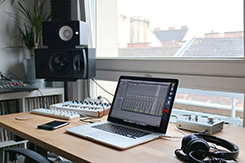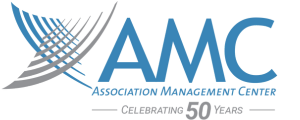
How to Record a Podcast
Podcasts are more popular than ever and for good reason. They can bring value to your business or organization, give voice to your opinions or expertise, and educate members or prospects about the benefits your association or industry offers. They also provide a great opportunity for bringing in revenue through ads and sponsors. Luckily, with the proper equipment, a podcast content strategy, and a team well-versed in podcast recording, you can create a podcast that will benefit your association, too.
As a sound technician for the Conversations by Association podcast, I present to you the three main phases of production that we learned while creating the podcast we cohost with The Collaborative, called Conversations by Association. For even more tips on creating a podcast, check out our previous blog about the 10 things no one tells you about creating a podcast.
Setting Up
To prepare to record your podcast, you’ll need a microphone, a way to connect the microphone to your computer (e.g., a USB or XLR), and software that will allow you to record and edit audio. A good pair of headphones will come in handy for editing, as well. There’s a wide variety of additional audio gear you could use, including filters, interfaces, and sound shielding, but peripheral gear will increase costs and can be difficult to use effectively. From working on Conversations by Association, AMC’s Creative Media Services (CMS) team has both the software and the expertise to develop and record a high-quality podcast.
Recording
While editing can fix a lot of mistakes, there’s no replacement for a clean, clear recording. At its simplest, this entails avoiding any background noise and accurately setting the gain, or input level, of your microphone. Be aware of any sources of unwanted noise like fans, voices, or street traffic. Though it isn’t necessary to have a soundproof studio, try to avoid rooms with many hard, flat surfaces, which can create echoes.
It’s more difficult to create a clean audio recording than you think. Investing in a vendor with professional equipment to create the best audio recording may ultimately save you time (and money!) during the editing phase. As for your microphone, try to set the gain as low as possible while ensuring that your voice is clearly audible—this will keep background noise to a minimum. In addition, if the gain is too high, the audio will clip or distort.
Editing
Once you’ve recorded your audio, you can edit the clips to remove errors, reorder content, insert an introduction, and so on. Many audio software suites include post-processing effects that remove noise, equalize voice levels, or boost certain frequencies. These tools can be complicated, but experienced podcast recorders can help.
Hopefully these tips will help you get started on producing your own podcast! It may take a couple of tries to get your recording right, but that’s not a problem; it’s all part of the process. And be sure to listen to Season 2 of Conversations by Association this spring.
Evan Richards is an assistant editor on the Creative Media Services team at AMC.
Interested in developing your own podcast? Fill out the Contact Us form and we’ll reach out for more details.
Be the first to know about the latest articles, news, and events from AMC. Sign up for our emails!


